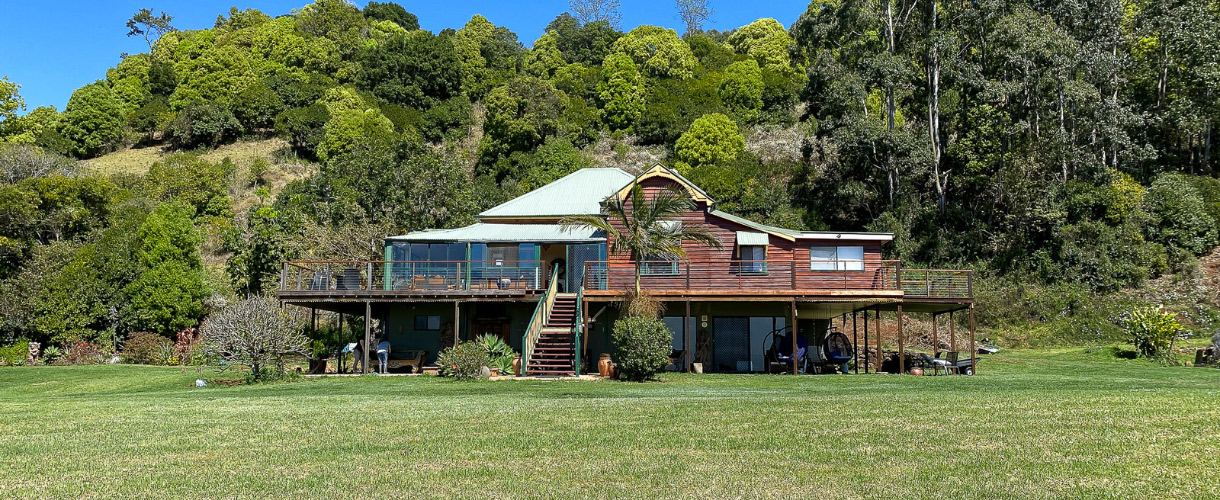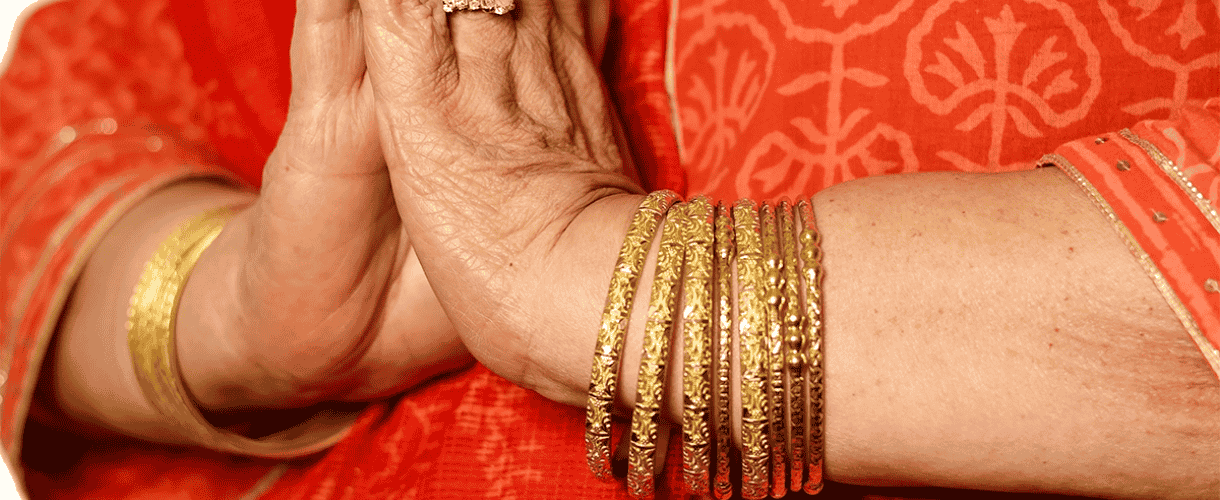
Ayurveda Consultations
March 19, 2019
Shanti & Peter Gowans move to Nirvana
August 18, 2019Being diligent with your daily routines, exercising a lot, eating well, and doing the ‘right’ things by your body would be enough to keep you in good health physically, and emotionally strong. Yet, many people report that there appears to be a missing link, something that’s not quite right with their body, which is not only hidden from them, but which even many doctors are failing to identify.
The problem that affects nearly everybody, no matter how active or sedentary you are, or how old or young, tight hip flexors affect not only the body but the whole of a person’s well-being.
Our hip flexors are the engine through which our body moves. They control balance, our ability to sit, stand, twist, reach, bend, walk, and step. Everything goes through the hips. And when our hip flexors tighten, it causes a lot of problems in ordinarily healthy and active people, like us. Most people end up having tight hip flexors, yet never realise it.
The magnitude of the problem is more than a bit of soreness or stiffness. Tight hip flexors are the root cause of problems such as:
- Nagging joint pain in your legs, lower back or hips
- Walking with discomfort
- Hips locking up
- Bad posture
- Trouble sleeping
- Sluggishness during your day to day life
- High anxiety
- Digestive problems
- Compromised immune system
- Circulatory issues
- Loss of sexual performance
- Lack of explosiveness in the gym or sports
If any of these sound familiar to you, you are not alone. Everything flows through the hips. Think of the hips as a barometer. The health and flexibility of your hip muscles is an indicator of the strength and health of the whole body. When these muscles are healthy, we are healthy.
Your hips are the bridge between your upper body and lower body. They are at the centre of your body’s movement. Sitting within the well of your hip and lower spine is the psoas major muscle, (each of a pair of large muscles which run from the lumbar spine through the groin on either side and, with the iliacus, flex the hip. A second muscle, the psoas minor, has a similar action) one of the two muscles that makes up the iliopsoas, the anterior or inner hip muscle.
It is often called the “mighty” psoas (pronounced so-az) because of the many important functions it plays in the movement of your body.
The psoas is the only muscle in the human body connecting the upper body to the lower body.
The muscle attaches to the vertebrae of the lower spine, moves through the pelvis (hips) and connects to a tendon at the top of the femur (thigh bone). It also attaches to the diaphragm, so it’s connected to your breathing, and upon it sit all the major organs.
A functioning psoas muscle creates a neutral pelvic alignment, stabilises the hips, supports the lower spine and abdomen, supports the organs in the pelvic and abdominal cavity and gives you greater mobility and core strength.
When it functions well, it has the power to…
- help you achieve peak performance, day after day after day.
- drop body fat that stubbornly clings to your body.
- train harder, heavier and gain strength faster than you thought possible.
- hit your peak of sexual health.
- flood your mind and body with renewed energy and vigour.
Put simply, this muscle is the core of activity in your body. So, when it’s out of balance, or if the psoas tightens, there are serious consequences which flow throughout the body.
Although it may be the most harmless activity known to human beings, the one activity that’s the sworn enemy of your psoas muscle, and thus also amongst the biggest dangers to your health, is sitting.
Even if you’re the most active of athletes, you may still suffer from a tight psoas due to the amount of time you spend each day planted in a chair. Weakness, shortening and tightness develops in the muscle through sitting for extended periods of time, poor sleep posture and even stress and tension.
Here are some ways that sitting is damaging to your physical and emotional wellbeing.
Bulging Belly
Whilst that bulging belly may be because of weak abdominal muscles, the real cause is likely to be tight psoas muscles, which cause the lower back to curve pushing out the stomach, the strain of which in turn weakens the abdominal muscles. When the psoas works properly, it pulls the abdomen back tucking the tummy in, giving you a strong, flat stomach.
Fat Gain
As the body’s ‘fight or flight’ muscle, your psoas is deeply connected with your natural survival instinct. It instantly tightens in moments of danger, to either protect you (in a foetal position) or help you run, fuelled by the release of adrenaline. Hence, your hips are also known as your ‘survival muscle’. However, if your psoas is constantly tight, it signals to the body that you are in constant danger, leading to overworking of the adrenal glands. When this happens, your immune system suffers and your body automatically switches into fat storing mode in anticipation of danger.
Sexual performance
Sitting all day causes your hips to become stuck in a forward thrust position. This leads to a pulling on the lower back and decreased blood flow and circulation through the hips and through to your sexual organs.
What to do
Knowing you have tight hip flexors is one thing. However, knowing how to fix your hip flexors is another challenge altogether.
Some so-called experts suggest rolling around with a tennis ball or foam roller stuck to your hip (as if that will really make any difference in unlocking your hip flexors!) Others will have you believe it’s simply a case of holding a few static stretches for a period of time to try to lengthen the muscle.
The reason few people manage to fix their hip flexors is simple. The psoas is attached within your body, buried deep inside your core, making it tough to access. It’s a hard muscle to find, let alone train. So it’s little wonder why trying to loosen it requires more than a simple static hip flexor stretch which has minimal effect.
Act Now
The way we moved thousands of years ago is our natural state, which requires flexible and mobile hips. You need flexible hips to live a long and healthy life. Hip flexibility, mobility and strength is an important pursuit to keep your overall body healthy.
Trauma, injury and stress can build up within your posture and ultimately affect your psychological state.
Crunches and sit-ups won’t do a thing to help, and your intense core workouts could be doing more harm than good if you haven’t loosened up your hips first. Ripples across your body cause other muscle groups to compensate, often with more damage.
If surgery is not an option you want to go through, despite a non-reversible degenerative arthritic condition in the hips, the comprehensive system from Shanti yoga, to unlock your hips and restore movement the way it should be, will help you re-balance your pelvis and hip joints, to a point where you will not be able to tell that you have had an issue at all.
Manage and recover from injuries. It’s time to breathe new life, energy and strength into your body by unlocking your hip flexors.
If your are a gym junkie or a couch potato, if you have a desk job or drive a car for long periods, you need to act now. Now is the time to take control and discover for yourself the difference Shanti Gowans’ incredible sequential flow can make to your strength, flexibility, energy and overall health.
Shanti Yoga and tight hip flexor release
The ‘cure’ isn’t simply to stop sitting. You need to be more pro-active in targeting the muscles affected, to undo the damage from sitting all day. The damage is most likely already done, and what you need to redress is those deep-seated imbalances before the damage becomes permanent.
The good news is, you can learn to release your tight hip flexors with the comprehensive program from Shanti Yoga.
You need to approach the hip flexor muscles from a variety of angles, using a variety of movements, stretches and exercise techniques, in order to ‘unpack’ the muscles in the right way.
Think of your psoas as a combination safe lock, in which there are several numbers that will unlock it, but they need to be entered in the right order.
Shanti Yoga provides a number of specific movements, together with simple static stretching, that enables you to unlock and loosen your hips, legs and back.
Some of these include:
PNF stretching(proprioceptive neuromuscular facilitation) which is a technique where you activate a specific muscle in order to relax the muscles around a joint, so that you can decrease the stiffness around a joint.
Dynamic stretching is where you activate the muscle around a joint and move that joint through its full range of motion, in a progressive manner. This leads to an increased range of motion around the joint, warming up the muscle around the joint and improving the circulation around the joint. Think of hug (high) knees or heel to bottom (butt kicks).
Three-dimensional core stability exercises target the hip flexor muscle from all planes of movement, so that the core and abdominal muscles have good activation, endurance and strength in all planes of movement, which leads to a decrease in unnecessary damaging stress on the joints. Think of the plank posture.
Mobility exercises target the joint with movements and exercises that help the joint function optimally. This allows a joint to move more freely.
Fascia Stretching is unique to yoga, and targets the tissue that muscles are surrounded by, working on loosening and lengthening the fascia. Think of the side-stretches such as the crescent moon and the triangle posture.
Muscle activation movements: Because of all of our sitting and daily technology usage, many of our muscles are not working properly. With muscle activation movements, we target those muscles that are not used a lot, and activate them in order to help the body move more efficiently.
Sequential Flow is the Key to Success
Knowing the specific practices you need to unlock your hip flexors, is followed by the next question, namely how to combine these in the most effective way.
Because it’s not just about the exercises. The power of effective practices lies not only in what techniques are performed, and how well you perform them, but in doing these in their proper sequence. Like unfolding a sheet or unpacking a parcel or unlocking a combination lock, opening up the muscles in your hips requires it to be done in the right order.
If you try to release one muscle before another incorrectly, you will add to your tightness. Getting it wrong can really make it worse. Perhaps this is why so many people give up and believe, incorrectly, that they have to live with the problem, taking pain killers and so on. But hoping the problem will go away by inactivity and not exercising is just as damaging. So avoiding exercise is a poor solution when you can get back into a full and active life.
Done effectively however, with comfort and support (support cushions, pillows, bricks, belts, straps), which are invaluable starting points to help you move back towards your natural health, together with a sequential flow, your body will be able to activate its natural healing processes, and you will be able to improve your flexibility while also adding strength and vitality.
Many of the Shanti Yoga exercises and stretches could be ones you already know about, but the difference is that doing the movements in the right order unravels all the tissues including muscle, fascia, connective tissue, and the joint capsule while breaking up scar tissue.
The stretches and exercises are sensible and easy to learn. Using the right sequence unravels the tricky layers of tension with the very difficult psoas muscle, in order to effectively loosen and train it, initiating an increase in blood flow to the area, to clean out metabolites and lactic acid, and reduce inflammation, while nourishing and rejuvenating the area.
The Shanti Yoga program is practical, easy to follow, with detailed, step-by-step instructions, with progressions to make the movements more manageable and challenging, as well as having the teacher’s demonstration of these powerful and effective stretches. It is a program of wellness that you can start immediately, to instantly release your hip flexors for more strength, better health and all day energy. You will experience immediate results from the very first time you go through the program.
By learning how to do this properly, in the correct sequential order will enable you to start undoing some of the damage done to your psoas and start helping your body heal itself naturally.
In addition you will practice clearing your mind and re-energise your thinking through learning how to relax your psoas muscle, which will help you with the skill of removing stress from your mind. You will be feel happy, healthy and thank us for sharing this with you.






